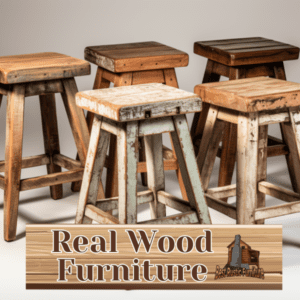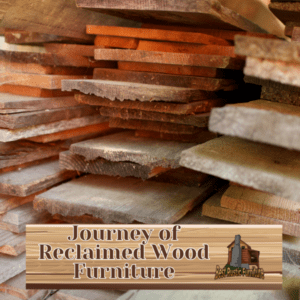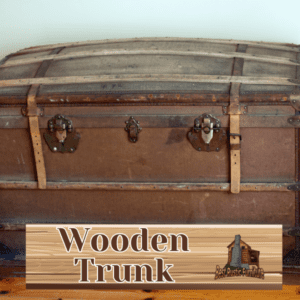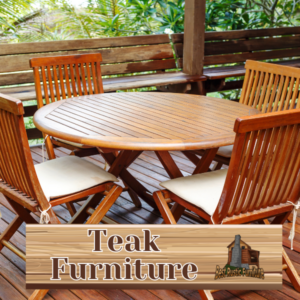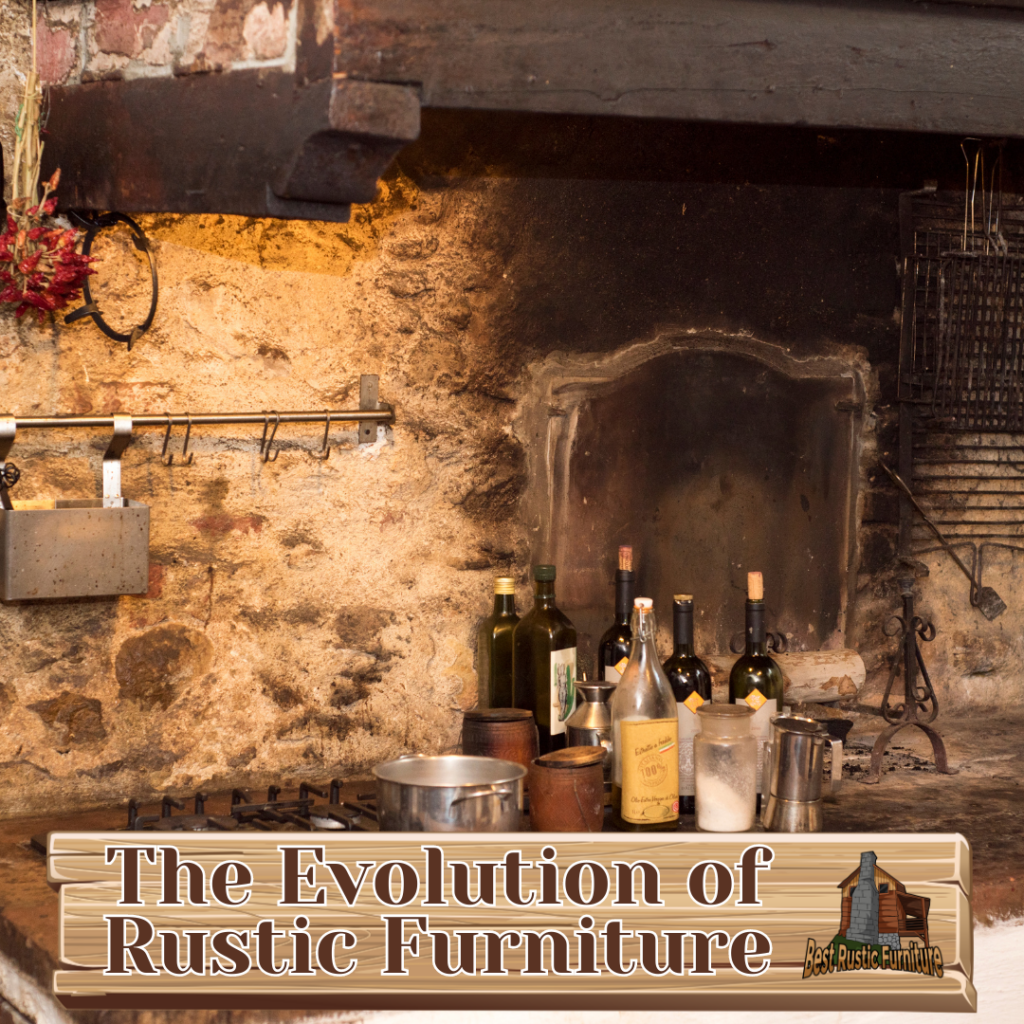
Rustic furniture, with its raw and natural appeal, has come a long way in its evolution from being a mere necessity to becoming a lifestyle choice. The origins of rustic furniture can be traced back to the influence of early settlers who utilized available resources to craft functional furniture pieces. The utilitarian nature of rustic furniture was driven by the need for practicality and durability. However, over time, rustic furniture underwent a significant transformation, shifting from its utilitarian purpose to incorporating aesthetic appeal.
Traditional craftsmanship played a crucial role in this evolution, as skilled artisans began to add intricate details and decorative elements to rustic furniture, elevating it from a simple functional piece to a work of art. Characteristics that define rustic furniture include the use of natural materials like wood, stone, and metal, and a focus on textures and imperfections that highlight the organic beauty of these materials.
Rustic furniture has become more than just a design choice; it has become a lifestyle statement. In modern interior design, rustic decor has gained immense popularity for its warm and inviting ambiance. The appeal of rustic furniture extends beyond indoor spaces to outdoor living areas, where it adds a touch of rustic charm and creates a connection with nature.
Looking ahead, the future of rustic furniture lies in incorporating modern design trends while maintaining its rustic elements. This fusion creates a unique blend of styles that caters to contemporary tastes while preserving the rustic authenticity. The sustainable and eco-friendly aspects of rustic furniture align with the growing demand for environmentally conscious choices.
With its rich history, enduring charm, and adaptability, rustic furniture continues to evolve and capture the hearts of those seeking a unique and timeless aesthetic for their homes.
Key takeaways:
- Rustic furniture originated out of necessity: Early settlers created simple, utilitarian pieces from natural materials to meet their practical needs.
- Evolving from necessity to aesthetic appeal: Rustic furniture has transformed from functional pieces to sought-after statement pieces in modern interior design.
- Rustic furniture embodies sustainability and eco-friendliness: The use of natural materials and the incorporation of rustic elements align with the growing focus on environmentally friendly design choices.
The Origins of Rustic Furniture
Discover the fascinating story behind rustic furniture and how it has evolved from a basic necessity to a beloved lifestyle choice. Delving into the origins of rustic furniture, we’ll explore the influence of early settlers and the utilitarian nature that makes it so unique. Uncover the rich history and cultural significance of rustic furniture, as we unravel the journey that has shaped it into the beloved style it is today.
The Influence of Early Settlers
The influence of early settlers was paramount in shaping the development of rustic furniture. As these settlers ventured into new lands, they relied on the resources available to them to fashion their own furnishings. This gave rise to the incorporation of natural elements like wood, stone, and animal hides. The craftsmanship of these pioneers prioritized utility over aesthetics, serving as the foundation for the progression of rustic furniture. Over time, these designs and techniques gained popularity and became integral to modern interior design and outdoor living spaces. The enduring impact of early settlers is still evident in the defining features of rustic furniture today.
The Utilitarian Nature of Rustic Furniture
Rustic Furniture: Embracing Its Utilitarian Nature
Rustic furniture is renowned for its utilitarian nature, as it serves both functional and practical purposes. This style of furniture places great importance on functionality and durability, valuing them over ornate and decorative elements. In order to achieve this, rustic furniture prominently features sturdy, natural materials like solid wood and iron. Moreover, it often boasts ample storage spaces, such as spacious drawers, shelves, and cabinets, reflecting its utilitarian character.
The simplicity of rustic furniture’s design allows for easy maintenance and remarkable versatility, making it suitable for various living environments. Its straightforward and robust construction ensures that it can withstand daily use and endure for generations to come. By embracing the utilitarian nature of rustic furniture, one can appreciate its timeless appeal and practicality.
The Evolution of Rustic Furniture
From humble beginnings as a necessity to now a thriving lifestyle trend, the evolution of rustic furniture has a fascinating story to tell. In this section, we’ll explore the transformation of rustic furniture, from its functional origins to its current status as an object of aesthetic appeal. We’ll uncover the profound influence that traditional craftsmanship has had on shaping this unique style. Buckle up and get ready to discover the journey of rustic furniture through time!
The Transition from Necessity to Aesthetic Appeal
The transition from necessity to aesthetic appeal is a major factor in the evolution of rustic furniture. As people’s tastes and lifestyles changed, rustic furniture began to take on a more decorative role in addition to its original functional purpose.
- Shift towards aesthetics: The Transition from Necessity to Aesthetic Appeal involved incorporating intricate designs and decorative elements into rustic furniture.
- Use of decorative techniques: Artisans started adding carvings, engravings, and detailed embellishments to enhance the visual appeal of rustic furniture.
- Emphasis on craftsmanship: Craftsmen began to focus not only on functionality but also on creating pieces that were visually appealing and showcased their skills.
- Mix of materials: Rustic furniture started incorporating a mix of natural materials like wood, stone, and metal to create visually interesting and aesthetically pleasing pieces.
- Attention to details: From the texture and grains of the wood to the finishes and stains used, every detail was carefully considered to enhance the overall aesthetic appeal.
The Influence of Traditional Craftsmanship
Traditional craftsmanship plays a significant role in the development and appeal of rustic furniture. The influence of traditional craftsmanship is evident in the following ways:
Learn more about the Evolution of Rustic Furniture: From Necessity to Lifestyle.
- Expert woodworking techniques: Skilled artisans utilize time-honored woodworking methods to create intricate and long-lasting pieces.
- Hand-carved details: Traditional craftsmanship adds an artistic element to rustic furniture, with hand-carved accents showcasing the skill and creativity of the craftsmen.
- Joinery techniques: The use of traditional joinery methods, such as mortise and tenon or dovetail joints, ensures the strength and stability of the furniture.
- Attention to detail: Craftsmen maintain a meticulous focus on every aspect of the piece, from selecting high-quality materials to employing precise finishing techniques. This results in furniture that reflects their dedication and expertise.
Pro-tip: When buying rustic furniture, prioritize pieces that demonstrate the influence of traditional craftsmanship for authenticity and enduring quality.
The Characteristics of Rustic Furniture
Rustic furniture, a true embodiment of simplicity and authenticity, has evolved from a mere necessity to a captivating lifestyle choice. In this fascinating exploration of the characteristics of rustic furniture, we will delve into the use of natural materials, where the very essence of nature is harnessed to create timeless pieces. We will uncover the allure of textures and imperfections, which give each rustic piece its unique charm and tell a story of resilience and beauty. Prepare to be enchanted by the world of rustic furniture!
The Use of Natural Materials
One of the key characteristics of rustic furniture is its use of natural materials. These materials not only enhance the unique aesthetic appeal of rustic furniture but also align with eco-friendly and sustainable practices. Here are some examples:
- Wood: Rustic furniture primarily utilizes various types of wood such as oak, pine, and maple.
- Stone: Stone is often incorporated into rustic furniture as tabletops or accents, adding a touch of nature and durability.
- Leather: Rustic furniture incorporates leather for its seating surfaces, providing a timeless and rustic feel.
- Iron: Iron is utilized in rustic furniture for hardware and decorative elements, adding both strength and character.
Incorporating these natural materials helps connect rustic furniture to its origins and creates a harmonious blend with the surrounding environment.
Fun Fact: Rustic furniture made from reclaimed wood not only reduces deforestation but also promotes the preservation of natural resources.
The Emphasis on Textures and Imperfections
One key aspect of rustic furniture is the emphasis on textures and imperfections, which adds character and a unique charm to the pieces.
- Natural materials: Rustic furniture often showcases the raw beauty of natural materials like wood, stone, and metal, allowing their textures to shine through.
- Distressed finishes: Some rustic furniture pieces incorporate intentional wear and distressing techniques, creating a weathered and aged look that adds to the rustic appeal.
- Handcrafted details: Imperfections like knots, cracks, and variations in wood grain are embraced as a testament to the handmade nature of rustic furniture.
- Textured upholstery: Rustic furniture can feature fabrics and upholstery with textured weaves or patterns, adding tactile interest and enhancing the overall rustic aesthetic.
Rustic Furniture: A Lifestyle Choice
Rustic Furniture: A Lifestyle Choice – Explore the ever-growing popularity of rustic decor in modern interior design and the undeniable appeal of rustic furniture in outdoor living spaces. Discover how the humble origins of rustic furniture have transformed it into a statement of style and a reflection of our desire to reconnect with nature. From cozy cabins to urban lofts, embrace the timeless charm and warm aesthetics of rustic furniture, making it more than just a trend, but a way of life.
The Popularity of Rustic Decor in Modern Interior Design
The popularity of rustic decor in modern interior design, including the use of natural materials like wood, stone, and metal, has soared in recent years. Homeowners are seeking to bring a warm and cozy feel to their living spaces, and rustic furniture is in high demand for its charm and character. This trend is a result of the timeless appeal of rustic pieces, which never go out of style and can create a classic and inviting atmosphere. With warm colors, textures, and rustic finishes, a cozy and inviting ambiance is achieved, enhancing the comfort of the space.
Rustic decor also offers an eclectic appeal, as it blends well with other design styles. Homeowners can mix and match rustic pieces to create a unique and personalized look. It’s a way to incorporate a touch of nature and a sense of warmth into modern interior design, making it a popular choice for many.
Looking back in history, rustic decor originated from the practical and durable furniture needed in early settlements. With limited resources, settlers crafted furniture from natural materials found in their surroundings. As time went on, rustic furniture evolved from purely functional to an aesthetic choice, capturing the beauty of imperfections and celebrating the simplicity of nature. Today, rustic decor continues to captivate with its timeless charm and its ability to create a cozy and inviting atmosphere in any home.
The Appeal of Rustic Furniture in Outdoor Living Spaces
The appeal of rustic furniture in outdoor living spaces is undeniable. Its natural elements and rugged beauty create a welcoming and cozy atmosphere. Here are some reasons why rustic furniture is perfect for outdoor spaces:
- Weather Resistance: Rustic furniture, with its appeal in outdoor living spaces, is typically made from sturdy materials such as teak or cedar, which are naturally resistant to harsh weather conditions.
- Natural Aesthetics: The organic textures and earthy colors of rustic furniture harmonize with the natural surroundings, creating a seamless connection to nature.
- Durability: Rustic furniture, which holds the appeal of rustic furniture in outdoor living spaces, is built to last, with solid construction and robust materials that can withstand heavy use and outdoor elements.
- Versatility: From dining sets to lounge chairs and benches, there is a wide variety of rustic furniture options available to suit different outdoor living needs and preferences.
- Timeless Charm: Rustic furniture, with its appeal in outdoor living spaces, has a timeless appeal that never goes out of style. It brings a sense of nostalgia and authenticity to outdoor spaces.
The Future of Rustic Furniture
As we look ahead to the future of rustic furniture, we can’t help but envision the exciting prospects it holds. In this section, we’ll explore two key aspects that shape the future of rustic furniture. Discover how designers are seamlessly blending modern design trends with rustic elements, creating a captivating fusion of styles. We’ll also delve into the sustainable and eco-friendly aspects of rustic furniture, considering its role in creating a greener and more conscious living environment. Get ready to be inspired by the remarkable evolution of rustic furniture.
Incorporating Modern Design Trends with Rustic Elements
Incorporating modern design trends with rustic elements can bring a unique and timeless appeal to any space. Here are some ways to achieve this:
- Blend materials: Combine rustic materials like wood and stone with modern elements such as glass or metal to create a harmonious balance.
- Use contrasting colors: Pairing rustic and modern colors can create visual interest and highlight the beauty of each element.
- Add modern accents: Incorporate sleek and minimalist furniture pieces into the rustic setting to create a striking contrast.
- Mix textures: Combine smooth and polished textures with rough and natural textures to add depth and character to the space.
Fact: Incorporating modern design trends with rustic elements can create a warm and inviting atmosphere while adding a touch of contemporary style.
Incorporating Modern Design Trends with Rustic Elements naturally enhances the aesthetic appeal of any space. To achieve this, consider implementing the following techniques:
- Blend materials: Create a harmonious balance by combining rustic materials such as wood and stone with modern elements like glass or metal.
- Use contrasting colors: Highlight the beauty of each element by pairing rustic and modern colors, adding visual interest to the space.
- Add modern accents: Introduce sleek and minimalist furniture pieces into the rustic setting, creating a captivating contrast.
- Mix textures: Enhance the space’s depth and character by combining smooth and polished textures with rough and natural ones.
Incorporating modern design trends with rustic elements not only creates an inviting atmosphere but also adds a touch of contemporary style.
The Sustainable and Eco-Friendly Aspects of Rustic Furniture
The sustainable and eco-friendly aspects of rustic furniture make it an appealing choice for environmentally conscious individuals. Here are some reasons why:
- Use of reclaimed materials: Rustic furniture often incorporates reclaimed wood, reducing the need for new resources and minimizing deforestation.
- Minimal carbon footprint: Handcrafted rustic furniture is typically made locally, reducing transportation emissions.
- Longevity and durability: Rustic furniture is often built with high-quality materials and sturdy construction, resulting in longer lifespans and less frequent replacement.
- Natural finishes: Many rustic furniture pieces are finished with non-toxic, eco-friendly substances like natural oils or water-based stains.
By choosing rustic furniture, individuals can contribute to a more sustainable and eco-friendly lifestyle, while also enjoying the unique charm and beauty of these pieces in their homes.
Some Facts About The Evolution of Rustic Furniture: From Necessity to Lifestyle:
- ✅ From the 1880s to the 1930s, wealthy individuals built large log houses called great camps in the Adirondack Mountains in New York State. (Source: Our Team)
- ✅ These great camps were filled with rustic furniture made of unpeeled wood, Oriental rugs, and other amenities. (Source: Our Team)
- ✅ The Adirondack Museum in Blue Mountain Lake opened in 1957 to commemorate this lifestyle and has a collection of art, crafts, and history related to Adirondack life. (Source: Our Team)
- ✅ The Adirondack Museum showcases paintings by famous artists such as Winslow Homer and Frederic Remington, over 66,000 historic photographs, and examples of rustic furniture in various cottages on the site. (Source: Our Team)
- ✅ The Rustic Furniture Fair is hosted by the Adirondack Museum every year, where around 50 furniture makers from different states showcase their work made from materials like black willow, birch, pine, hickory, black alder, and smoke vine. (Source: Our Team)
Frequently Asked Questions
1. How did the Adirondack lifestyle influence the evolution of rustic furniture?
The Adirondack lifestyle, with its emphasis on comfortable rustic living in the midst of nature, played a significant role in the evolution of rustic furniture. Wealthy individuals built large log houses and great camps in the Adirondack Mountains, furnishing them with rustic furniture made from unpeeled wood, Oriental rugs, and other amenities. This lifestyle inspired the creation of handmade, simple-design furniture, incorporating whole and split logs, raw logs, and unpeeled wood.
2. What is the significance of the Adirondack Museum in relation to rustic furniture?
The Adirondack Museum in Blue Mountain Lake, opened in 1957, is a crucial landmark that commemorates the Adirondack lifestyle and its influence on rustic furniture. It houses a collection of art, crafts, and history related to Adirondack life, including paintings by famous artists like Winslow Homer and Frederic Remington. Additionally, the museum showcases examples of rustic furniture in various cottages on-site, allowing visitors to experience the look and feel of the Adirondack aesthetic.
3. How is the Rustic Furniture Fair related to the Adirondack Museum?
Every year, the Adirondack Museum hosts the Rustic Furniture Fair as an event deeply connected to the Adirondack lifestyle and rustic furniture tradition. The fair brings together around 50 furniture makers from different states who showcase their work, which is often crafted from materials like black willow, birch, pine, hickory, black alder, and smoke vine. The fair provides a platform for artisans to display their creations and celebrate the rich heritage of rustic furniture.
4. What are the characteristics of rustic furniture in terms of design and materials?
Rustic furniture is known for its handmade, simple design, and often oversized proportions that create a cozy and comfortable feel. It is typically made from raw woods, rough-hewn planks, and organic elements. The color palette leans towards neutral earthy tones like greens, browns, and grays. Materials such as wood, stone, burlap, and canvas are preferred, while modern furnishings and synthetic fibers are generally avoided in rustic design.
5. How does contemporary rustic design combine traditional and modern elements?
Contemporary rustic design is a popular style that blends traditional rustic elements with clean-lined modern design. It maintains the warm and inviting atmosphere of rustic design while incorporating modern materials and forms. This style embraces the use of organic materials such as wood and stone but may also integrate elements like geometric lighting or contemporary accent chairs. The combination of old and new elements creates a unique and timeless aesthetic.
6. What are the emerging trends in the furniture industry related to rustic design?
The furniture industry is witnessing profound changes as a growing number of people are embracing a sustainable approach and investing in high-end, long-lasting furniture instead of buying cheaper, disposable pieces. This trend aligns with the values intrinsic to rustic design, which prioritizes the use of natural materials and craftsmanship. As sustainability becomes a priority, rustic furniture, with its focus on durability and timeless aesthetic, is poised to continue gaining popularity.


